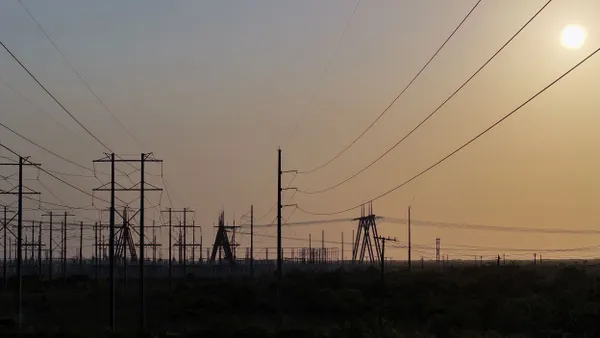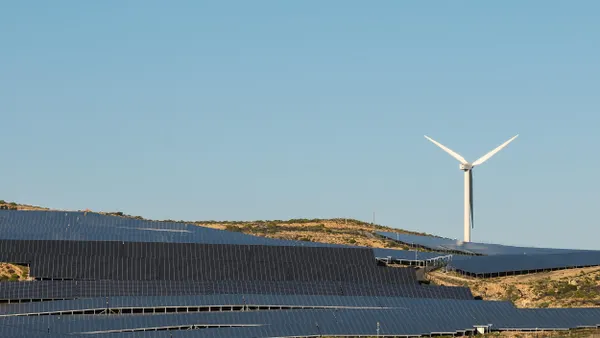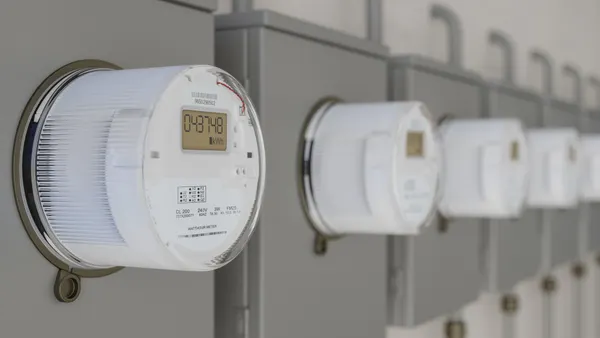For energy utilities, keeping high levels of business customer satisfaction is an ongoing pursuit.
According to J.D. Power’s 2022 Electric Utility Business Customer Satisfaction Study, more than 50% of U.S. businesses are mindful of utility rate increases, leading to a drop in business customer satisfaction compared to the previous year. Additionally, inflation impacts, labor shortages and supply chain issues are impacting business customers.
Despite these challenges, energy utilities can still achieve great business customer satisfaction. What best practices and strategies are vital for success? Energy utilities ranked highest in business customer satisfaction in their respective regions shared their secret formula.
“We value all of our customers and strive to exceed their expectations regardless of whether they are residential or business customers,” says Eileen Saunders, Vice President of Customer Services at Kentucky Utilities. “However, we approach business customers differently because their needs are different.”
Keep open and transparent communications
For Baltimore Gas & Electric (BGE), great business customer satisfaction starts with transparency, education and open communication. The utility keeps business customers informed about rising costs, state decarbonization efforts and other imperative issues.
“We spend a lot of time counseling business customers on energy efficiency programs, grants, and other ways to save on energy costs,” says Denise Galambos, Senior Vice President of Customer Operations and Chief Customer Officer. “Maryland is a state that’s very focused on its decarbonization goals, requiring us to continuously educate customers about what’s happening at the legislative level.”
To ensure open communication, BGE key account managers meet in person with businesses on a regular basis, notes Ammanuel Moore, Director of Large Customer Services at BGE. During the utility’s recent Smart Energy Council meeting, attendees representing city school districts talked about building plans for energy-efficient schools.
“They wanted to better understand if schools should be built to be completely electric or to incorporate both gas and electric,” Moore says. “While we don’t have all the answers, we meet with them regularly to provide education on the latest legislation so they can make an informed decision.”
Similarly, Seattle City Light hosts an annual Key Customer Forum, with an agenda based on what customers want to learn more about, notes Sandra Ball, Manager of Business Customer Services. They also hold Franchise Cities Forums tailored to specific areas of interest for business customers, such as power quality, building electrification, and transportation electrification.
Understand business customer needs
Before energy utilities can solve a problem or provide guidance, they must know the ins and outs of a business, from how it operates to long-term sustainability goals. A key element of Kentucky Utilities’ high business customer satisfaction is a focus on listening and understanding their customers’ needs.
“We can sit around and think about all the great things we can do for our customers, and while that’s a proactive approach, it’s listening that goes a long way to inform our ideas,” Saunders says. “We want to listen to our customers and make sure we are meeting them where they are.”
At Seattle City Light, understanding their business customers is essential for proactive outage management. Ball notes that the utility regularly communicates with critical care customers, such as hospitals and nursing homes, which are greatly impacted by outages.
These customers have a specific threshold of how long they can be without power before an evacuation is necessary. By learning their unique needs, Seattle City Light can make recommendations on what facilities are a priority for restoration. “We are committed to advocating for these customers,” Ball says. “They have a voice here, and we want them to feel understood and valued.”
Provide economic development opportunities
A commitment to economic development is vital to not only build satisfaction among existing business customers, but also start the relationship on the right foot with future business customers. According to Saunders, Kentucky Utilities’ Opportunity Kentucky Grant works in partnership with the state to help fund site preparedness and development efforts among communities across the service territory.
To help businesses expand or locate in Kentucky, the utility’s website, OpportunityKY.com, provides an easy-to-use site selection tool of available properties. In fact, Site Selection magazine named Kentucky Utilities as one of the top 20 utilities in the United States for corporate facility investment and job creation.
“As the largest utility in Kentucky, we want to make sure we’re doing everything we can to ensure there are sites ready for businesses to consider expanding or investing in our communities,” Saunders says. “If we can bring businesses to Kentucky, it’s a positive for all of our citizens.”
For BGE, improving economic development opportunities is a key driver of business customer satisfaction. Through the Smart Energy Economic Development (SEED) program, the utility has provided more than $10.5 million in construction discounts for businesses expanding or building a new facility in an economically challenged part of the service territory. BGE has also provided more than $800,000 in distribution discounts.
“We want businesses to seek Maryland as a place to do business,” Galambos says. “To the extent that we can reduce barriers in terms of construction and distribution costs, the SEED program has made this possible.”
Be an electrification resource
Energy utilities serve an important role as a trusted resource as businesses start their journey toward greater energy efficiency and electrification. That’s why it behooves utilities to be a supporter every step of the way.
Seattle City Light’s customer-centric culture is dedicated to supporting business customers on their electrification journeys. In fact, the utility worked with King County Metro, the city’s regional transit authority, to facilitate electric bus and fleet electrification. “We brought capacity to their site and worked on load management to reduce peaking, benefiting our grid and saving them money,” Ball says.
The utility also collaborated with the Port of Seattle to develop a waterfront clean energy strategy. Currently, Seattle City Light is working with the Washington State Department of Transportation to electrify their passenger ferry service, the largest ferry system in the United States. “We are going to help them transition to a hybrid electric ferry system in a thoughtful way,” says Jenn Strang, Media Relations Manager at Seattle City Light.
Businesses are also looking for guidance on how to incorporate renewable energy into their facilities. Through the Green Energy program, Kentucky Utilities allows businesses to buy blocks of green energy each month. The utility uses the dollar value to purchase Renewable Energy Certificates (RECs) from regional energy sources, such as solar and wind.
Support small businesses
Many energy utilities are making it a priority to support small businesses, which have different needs and challenges than key account customers.
To help small businesses navigate the myriad of utility programs, BGE created a website solely for this target audience. The SMB customer website helps customers find programs to save energy and money. Additionally, the utility launched a quarterly newsletter with energy efficiency tips, electrification resources, company news and more.
At Kentucky Utilities, the Business Service Center team understands the unique concerns of each small business and provides continuous communication. The team also doesn’t operate in a silo; they are trained on who to contact within the utility to effectively service the customer.
“We’re intentional about getting people in the right places to serve the needs of our customers,” Saunders says. “One of the main barriers that energy utilities face is treating their customers like a one-size-fits-all approach rather than trying to understand the unique aspects of each business.”
Ensuring a customer-centric approach
For energy utilities, improving business customer satisfaction starts with having teams, programs, and initiatives in place that speak to their needs. Whether businesses are looking to electrify their facilities or make energy efficiency upgrades, they see their energy provider as a trusted resource and energy expert.
“It goes beyond just making sure their lights are working and their gas is flowing,” Galambos says. “We want to make sure we have programs and efficiencies that help them not have to worry about their utility. Instead, they can focus on the business that they’re running.”










